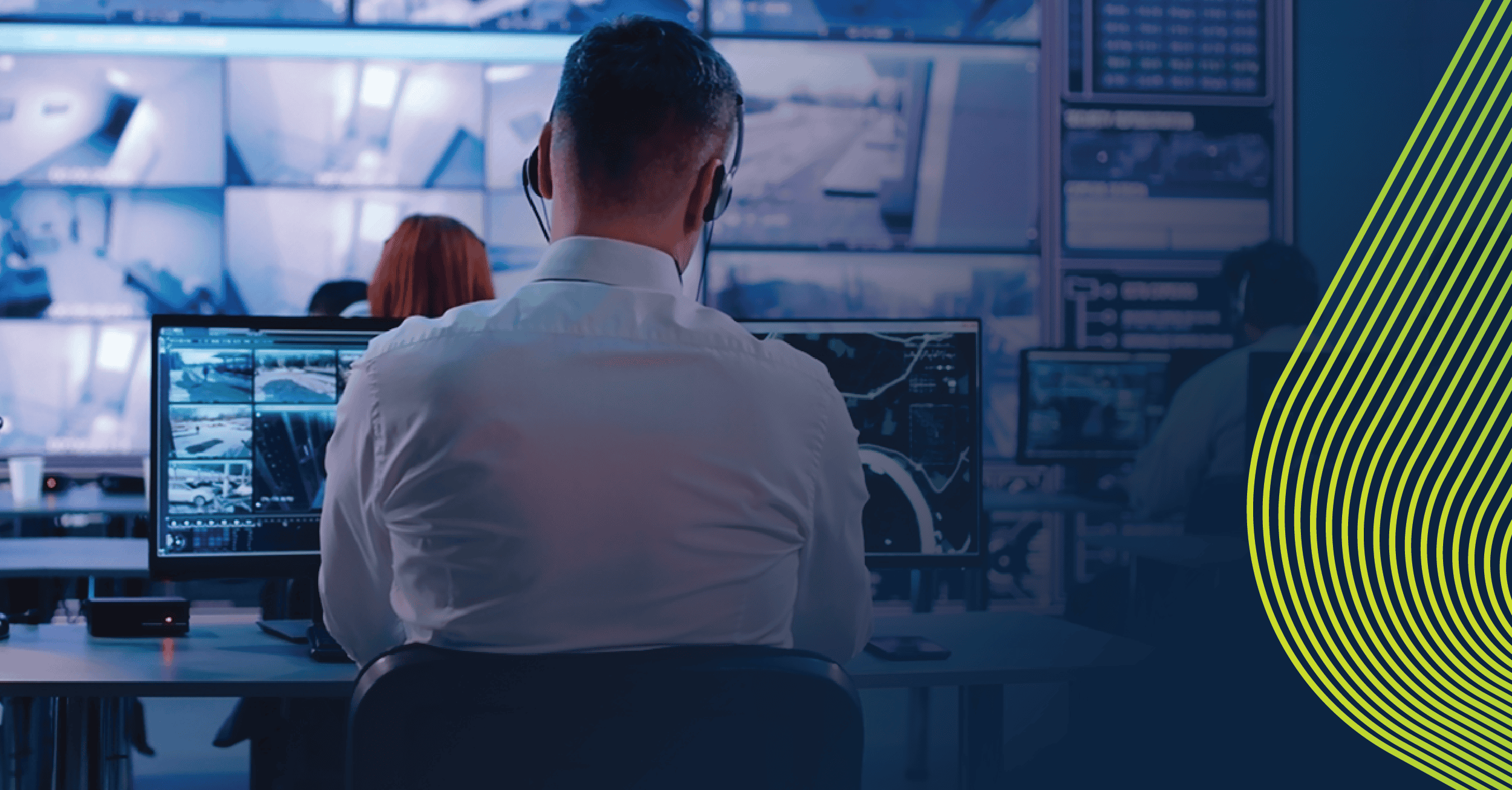There is no way to guarantee an organization’s success, especially in today’s unpredictable and interconnected business environment. However, there are tactics leaders can take to maximize success and minimize failure – and these efforts center around effective enterprise risk management (ERM).
The number of risks coming at an organization are varied and plentiful. From geopolitical risks to technological, economic, and environmental ones, an organization might face one or many threats each day. Eliminating risk is impossible, but organizations can minimize negative consequences and mitigate issues to keep their operations running smoothly, protect their people, and position themselves for long-term success through modern enterprise risk management.
Organizations that want to formalize their efforts should consider developing an enterprise risk management program that outlines responsibilities, workflows, and evaluation criteria for managing the full spectrum of potential threats.
From a Reactive to Proactive Approach
Leaders that approach risk management with a traditional risk management mentality need to reconsider. There are simply too many reliable technology tools that help teams develop proactive strategies that can do more than simply avoid threats, but these proactive approaches can help uncover new opportunities and help organizations set themselves up for long-term success.
Reactive strategies were the mainstay when security teams had no choice but to wait for a crisis. There wasn’t a way to ascertain meaningful trend data in real time. This is no longer the case. Innovations like Artificial Intelligence (AI), Machine Learning (ML), and Natural Language Processing (NLP) can help teams not only stay on top of what is happening in the moment but offer actionable threat intelligence that provides informative geopolitical risk metrics and threat forecasts.
Why Unified Strategic Thinking Matters
Reactive mindsets need to be retired. And that’s not all. Siloed thinking and ad hoc risk response are also outdated approaches that do nothing but leave organizations vulnerable to risk and threats that can most often be mitigated – if not avoided entirely. How? Leveraging a unified strategy. A unified approach breaks down silos that prohibit productive information sharing and allows leadership to see the full picture in terms of how a threat to one aspect of the business will indeed have wide-reaching negative impact.
Cross-functional approaches improve decision-making, as teams do not need to waste time trying to uncover the proper approval channels now, but already have set plans and processes to work through when the opportunity arises. These plans have been approved long before any actual crisis is at hand, giving teams the time to ensure that any potential actions will support regulatory compliance. The plans will also have been created with the input and support of relevant teams and decision makers – dramatically increasing efficiency when activation begins and building stakeholder confidence and trust. Additionally, when teams dedicate time to risk management, they will not only reduce threats, but will often identify new, more deliberate, and strategic approaches that help the organization achieve its mission more effectively.
When implemented well, enterprise risk management processes encourage organizations to evaluate all risk domains together – not in isolation – which strengthens agility and improves enterprise-wide decision-making.
What Makes an Enterprise Risk Management Strategy Work
When organizations are ready to put their ERM into action, they will want to embrace the following six elements to see an impact most efficiently.
#1: Leadership and Culture
Leadership buy-in is essential for any organizational program. This goes for enterprise risk management as well. If leaders want to see their teams and employees caring about ERM strategies, they must go first and show that this is a priority. Once leaders demonstrate that risk management is important to the overarching business, others will follow suit. As a result, risk management will become part of company culture, with clearly defined roles and responsibilities, and long-lasting benefits for all.
#2: Comprehensive Risk Identification
Risks need to be identified systematically across all categories: financial, operational, environmental, reputational, geopolitical, and so on. ERMs that loosely group issues will have a difficult time managing issues when they arise, as there haven’t been clear cut, well-defined mitigation strategies in place. Security leaders will want to leverage common methods like workshops and scenario planning to help employees identify various risks and then plan for solutions. For example, identifying financial risk alongside operational and reputational risk provides a complete view of organizational exposure.
This type of clarity enables risk managers to more confidently prioritize efforts and assign ownership to mitigation strategies before vulnerabilities escalate.
#3: Assessment and Prioritization
In order to plan for risks, teams need to evaluate them by their likelihood and impact. After all, it is important to have plans set in place for not only the risks that are most likely to occur, but also the ones that will have the biggest negative impact. There are several tools to assist with this, including heat maps and risk matrices. The goal is to focus energy where it matters most. This is where a thorough risk assessment can provide clear prioritization and guide resource allocation.
Equally important is the ability to distinguish between operational issues and strategic risk — those risks that could significantly affect long-term value, competitiveness, or mission achievement.
#4: Response Planning
Actionable plans, including set owners for each task, are an imperative part of ERM. There are typically four common approaches to these plans, which are: avoid, mitigate, transfer, and accept. During avoidance, teams will handle a risk by eliminating it entirely by stopping whatever activity had been creating the risk. The mitigate approach reduces the chance or impact or a risk by taking proactive steps to avoid that specific issue. Transfer is the act of shifting the financial responsibility or consequence of a risk to a third party, which could be someone such as an insurer or contractor. Lastly, in the accept approach, organizations will recognize the risk and simply accept it and its consequences. This is most commonly done when the risk is low and the time, effort, and cost to mitigate it outweigh the possible impact. Each decision must reflect the company’s risk appetite, ensuring alignment with strategic goals.
Response planning is one of the most critical enterprise risk management practices that separates high-performing risk teams from reactive responders.
#5: Ongoing Monitoring and Reporting
For any enterprise risk management framework to find success, teams will need to invest in regular monitoring of current and emerging risks, and then spend the necessary time in updating leadership, as well as editing plans and strategies as appropriate. For example, shifting political issues and geopolitical climates will result in new risks. This is why it is important for key risk indicators to be monitored and for regular updates to be made leadership. With the plethora of information being shared in today’s always connected world, security teams need to incorporate real-time tools into their processes in order to efficiently track new developments and adjust plans quickly.
Real-time tracking helps organizations address potential risks before they manifest into actual incidents, improving business continuity and resilience.
#6: Strategic Integration
Enterprise risk management and risk intelligence must feed directly into strategic planning, project decisions, and capital allocation. Organizations cannot succeed without ERM, therefore it should remain an ever-present topic on the agenda. It’s important to recognize how enterprise risk management differs from more basic risk programs: it ties risk management directly to business outcomes and strategy, rather than treating it as a compliance exercise.
When aligned with long-term planning, risk insights can help improve forecasting and support more effective risk management activities across departments.
Technology’s Role in Modern ERM
As noted in the “ongoing monitoring and reporting” paragraph above, analysts alone do not have the bandwidth to monitor all the risk-relevant data that is currently circulating the Internet. It is simply too overwhelming and cannot be managed manually. This is why technology is mandatory in order for an organization to put a successful ERM strategy in place. The volume and complexity of data is simply beyond the scope of a human analyst or team of analysts.
Modern platforms use technologies such as AI and ML to scan and analyze vast data sets from across the world. This is a critical component of risk management and often reveals not only the most present current issues but provides hints as to the threats coming next by identifying anomalies and patterns before they become full-fledged problems.
In addition to offering data to forecast the next wave of threats, technology enables predictive modeling. This centers around forward-looking scenario planning and modeling of what might happen next based on current data.
But technology shouldn’t be left to its own devices. The analyst and AI partnership is the one that will help security teams and their organizations enjoy the most success. After all, the best results come from blending machine power with human judgment. AI helps uncover the signals, and analysts interpret what it means for strategy.
The right risk technology and software gives leaders a single view – a centralized risk visibility – across the enterprise. This improves communication and decision-making across teams. It will help security teams do their jobs better, which ultimately benefits the entire organization.
Business Benefits of a Strong ERM Strategy
Enterprise risk management takes commitment, but the results speak for themselves. It isn’t always easy and, in some instances, it isn’t supported by the top. However, when this occurs, businesses will find themselves in challenging circumstances that could have likely been easily avoided.
When security teams are given the resources and support, they need, ERM becomes part of the organizational culture and is a topic in all strategic discussions. The pay-off for those investing in EMR is clear:
- Stronger resilience and continuity planning
- Better use of people and capital
- Faster response to disruption or opportunity
- More trust from investors, partners, and regulators
- Competitive advantage from smarter decisions
- Lower costs and fewer unexpected losses
Yes, ERM takes funding and time. But it will always save leaders more in the long run. Avoiding catastrophic supply chain delays, removing employees from harm’s way, keeping brand reputations in good standing – the reasons why an organization needs to manage risk proactively are long and varied. Organizations must prioritize this.
Lead with Insight, Not Fear
ERM has a lot of strategic importance in today’s business world. A successful enterprise risk management strategy is not about playing defense. Rather, it’s about gaining clarity and confidence in uncertain conditions. Leaders need to assess their current approach and explore modern tools and strategies to strengthen it. Third party vendors, such as Seerist, which offers an intelligence platform that delivers the trustworthy insights you need, right when you need them, can help support an organization’s ERM strategy with augmented analytics.
A well-executed enterprise risk management strategy helps organizations anticipate, prioritize, and manage risk in a way that drives both resilience and opportunity. Building an effective strategy that integrates people, processes, and technology is important and very possible with the assistance of the right tools and partners.
If your organization needs help strengthening its enterprise intelligence and risk management strategy, the time is now to consult with an expert that might have the tools and bandwidth to support you in this transformation.






